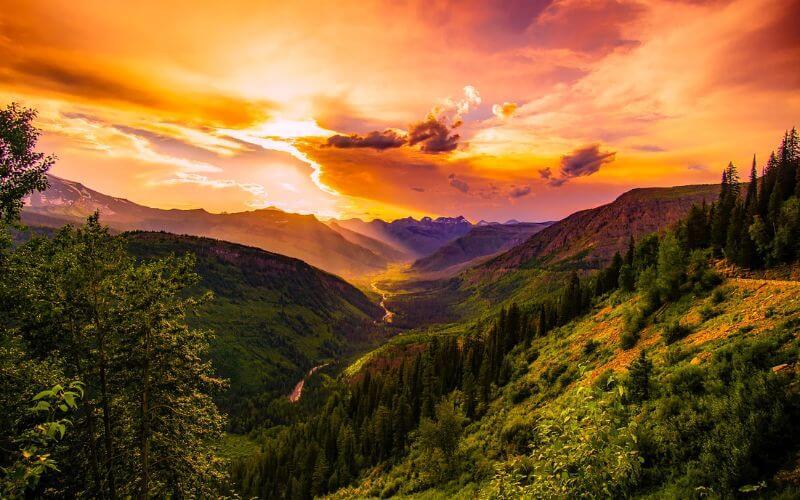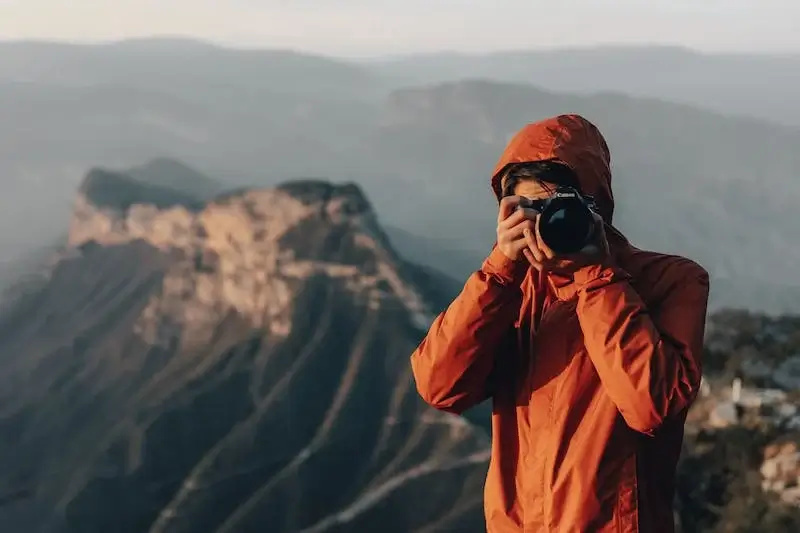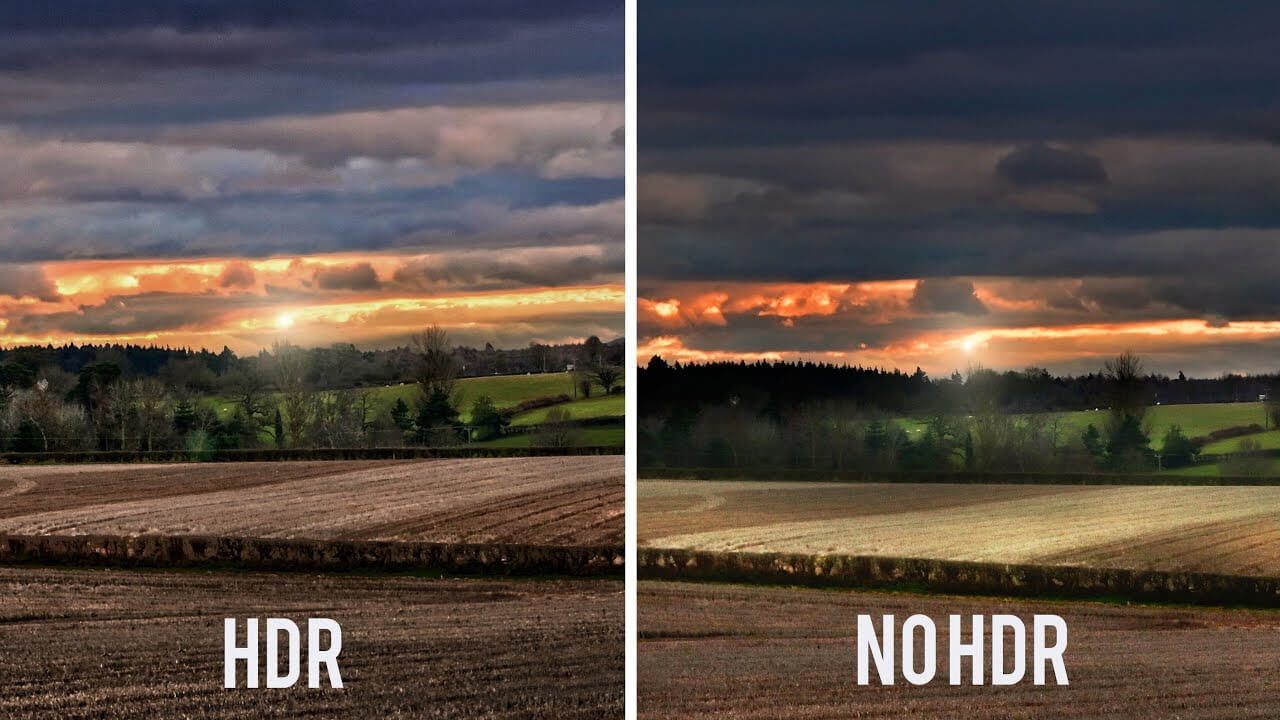What is HDR in Camera and When to Use It?

Many times you must have clicked images from your smartphone and read the HDR mentioned in the images. Have you ever wondered, what is HDR in camera?
Have you ever faced a situation where capturing a scene accurately was challenging due to the extreme differences in lighting conditions? For example, while photographing a landscape with a bright sky and shaded foreground, capturing the details in the cloudless sky and the darker areas is tough without losing information.
Undoubtedly, technological advancements have considerably evolved HDR cameras, with improvements in sensor technology, exposure blending algorithms, in-camera processing, dedicated HDR modes, and real-time HDR display. These developments have made HDR photography more accessible and user-friendly. Modern sensors capture a more comprehensive range of tones, while advanced algorithms seamlessly merge exposures for well-balanced HDR images. HDR capabilities have also extended to smartphones, making HDR photography widely available.
In this article, we will explore what does HDR mean on camera in greater technical aspects, discuss the benefits and limitations of using HDR, and provide practical tips on when and how to make the most of this feature.
So, let us begin the journey of what is HDR photos as below:
Part 1: What is HDR?

If you wish to understand what is HDR mode in the camera, keep reading.
HDR or High Dynamic Range is a pictorial technique that captures an image's broader range of light and dark tones. It combines multiple exposures of the same scene to create a final photo that preserves details in the brightest and darkest areas. By blending the exposures, HDR enables a more excellent dynamic range, enhancing image quality and delivering more realistic and visually appealing results.
HDR is beneficial when there is a stark contrast between a scene's brightest and darkest parts. It allows you to capture scenes with more balanced exposure, revealing details that would otherwise be lost. This technology has become increasingly popular in photography and the smartphone industry, where many devices now offer built-in HDR modes.
Bonus: The Best HDR Camera for Video Recording/Streaming
If you need an HDR camera, OBSBOT Tiny 2 is the best choice. OBSBOT Tiny 2 is a 4K webcam designed for video recording with advanced features. It offers voice and gesture control, allowing you to operate the camera hands-free and efficiently.
Now, let's introduce the OBSBOT Tiny 2, a camera that excels in capturing HDR video recordings.
Some of its notable specifications and features include:
- 1/1.5" CMOS: This sensor allows for superior light capture, resulting in sharper, clearer visuals even in challenging lighting conditions.
- 4K Ultra HD Resolution: The camera records video in stunning 4K resolution, delivering sharp, detailed footage.
- HDR Video: With HDR capabilities, the OBSBOT Tiny 2 captures a more comprehensive dynamic range, preserving details in both bright and dark areas of the scene.
- Tracking and Autofocus: The OBSBOT Tiny 2 incorporates advanced AI technology for precise tracking and autofocus, ensuring that the subject remains focused throughout the recording.
- Voice Control: You can control the camera using voice commands, making it convenient to start and stop recordings or adjust settings without physically interacting with the camera.
- Gesture Control: The camera recognizes gestures, allowing you to control functions like zooming or panning with simple hand movements.
Pros of Tiny 2:
- The small size makes it portable and easy to use in various settings.
- The HDR capability enhances video quality.
- The voice and gesture controls are one-of-a-kind and provide convenient operation.
Part 2: Does HDR Make A Difference on Camera?
HDR significantly affects cameras by expanding the dynamic range and improving the overall image quality. Here's what is the use of HDR in camera, its benefits, and disadvantages.
How HDR works:
HDR captures multiple exposures of the same scene at different brightness levels. Typically, the camera takes one average exposure, an underexposed image to capture details in the highlights, and an overexposed image to capture details in the shadows. These multiple exposures are combined using specialized software or algorithms to create a final HDR image that showcases a broader range of tones.

Benefits of HDR in camera:
So, what are the benefits of HDR in camera? There are several advantages below:
- Expanded dynamic range: HDR allows for a greater tonal range, capturing details of the brightest and darkest areas, producing images with more balanced exposure and enhanced details.
- Improved highlight and shadow details: HDR preserves intricate details in bright highlights and dark shadows, reducing the risk of overexposed or underexposed areas.
- Richer colors and tones: HDR images often display more vibrant colors, creating a visually appealing and immersive experience.
- Reduced noise and artifacts: By combining multiple exposures, HDR can mitigate noise and reduce unwanted artifacts in the final image.
Disadvantages of HDR:
While there are several benefits, HDR in camera does come with a few disadvantages, like:
- Increased processing time: Creating an HDR image involves merging multiple exposures, which can take longer than capturing a single image.
- Artifacts and haloing: In some cases, HDR processing may introduce artifacts or halos around high-contrast edges, resulting in less natural-looking images. However, modern HDR algorithms have significantly reduced these issues.
- Challenging moving subjects: When capturing scenes with moving subjects, such as people or vehicles, it can be challenging to align and merge the multiple exposures properly, potentially resulting in ghosting or blurring.
However, the benefits of HDR in camera photography outweigh the disadvantages. Thus, understand what does HDR do in a camera and use HDR judiciously to maintain natural-looking results.
Part 3: When to Use HDR in Camera?
After learning what does HDR mean in camera, it is time to understand when to use it. While the situation depends on the lighting conditions, here are several cases where HDR can be beneficial:
- High-Contrast Scenes: Scenes with a significant difference between bright and dark areas, such as landscapes with a bright, sunny sky and darker foreground, HDR helps retain details in the highlights and shadows.
- Backlit Subjects: When your subject is backlit, HDR can help balance the exposure, preventing the subject from appearing too dark against a bright background.
- Indoor/Outdoor Mixed Lighting: In situations with a mix of indoor and outdoor lighting, such as shooting indoors with sunlight streaming through windows, HDR can help maintain details in the well-lit and shaded areas.
- Low-Light Conditions: HDR can be helpful in low-light scenarios where you want to capture the details in the darker areas and prevent the highlights from getting blown out.
Part 4: Tips to Use HDR in Camera
This section will cover some tips to help you make the most out of HDR and thus explain more on what is the function of HDR in a camera:
- Use a Tripod: A tripod ensures precise alignment between the multiple exposures. This equipment helps maintain consistent framing and prevent unwanted movement or blur between the shots.
- Enable Auto Exposure Bracketing (AEB): AEB is a feature available in many cameras that automatically captures a series of exposures at different brightness levels. Enable AEB to streamline the process of capturing multiple shots for HDR.
- Take Multiple Shots: When shooting in HDR, capturing a range of exposures is essential. Try out different exposure values, such as underexposing for highlights and overexposing for shadows. This will give you more options when merging the images later.
- Consider RAW Format: If your camera supports it, shoot in RAW format. RAW files retain more data and provide greater flexibility during post-processing, allowing you to adjust the exposure and tonal balance more effectively.
- Avoid Overprocessing: Keep the final image natural-looking when merging the exposures or applying HDR processing. It's easy to go overboard with HDR effects, resulting in an unrealistic or exaggerated appearance. Aim for a balanced and pleasing outcome.
- Post-Processing: After capturing the multiple exposures, use HDR software or editing tools to merge them and fine-tune the final image. Explore different settings and adjustments to achieve the desired outcome while maintaining a realistic look.
- Bracketing and Burst Mode: If your camera has a bracketing feature or a burst mode, take advantage of them. Bracketing allows you to quickly capture a series of exposures with varying brightness levels, while burst mode helps capture multiple shots rapidly, reducing the chances of subject movement.
- Experiment with Different Scenes: Experiment with different scenes and lighting conditions to see how HDR can enhance your images. From landscapes and architecture to portraits and still life, HDR can highlight details and improve the overall visual impact.
Remember, practice and experimentation are crucial to mastering HDR photography. With time and experience, you'll create stunning images.
Conclusion
Thus, that was about what is HDR in a camera, its uses, and some beneficial tips. Do you still need clarification about what is HDR in mobile camera? Well, it works the same as any professional digital camera.
So, go ahead and try out the OBSBOT Tiny 2 HDR camera and share your experience with others. You will likely enjoy recording videos with the unique gesture and voice control features it offers.

















